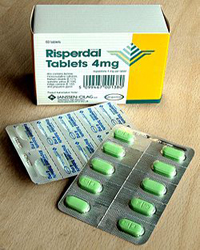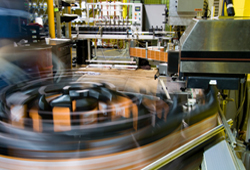| | Pharmaceutical packaging has to be carried out for the purpose of the safety of the pharmaceutical preparations in order to keep them free from contamination, hinder microbial growth, and ensure product safety through the intended shelf life for the pharmaceuticals. Packaging is a critical tool in the pharmaceutical industry for product delivery and regulatory compliance, many pharmaceutical companies will do all their packaging within a contamination free environment or Cleanroom. Some common pharmaceutical packaging techniques include foil and heat sealing; polyester and olefin package printing; polyethylene and polypropylene printing; and flat bed die cutting. |
Pharmaceutical packaging requires high attention to detail due to the critical nature of the materials required to protect the active product throughout its shelf life. Types of packaging material and design can also be influenced by the respective markets and heavily regulated by the authorities.
The pharmaceutical pack must protect the product against light, humidity and oxygen, as well as mechanical, climatic, microbiological and human hazards. It may need to be child and/or pilfer-resistant and it must also be compatible with the product and its contents.
These factors - coupled with the need to reduce costs for emerging markets, supply products for compassionate use, and compete with other competitors products on the market, only serve to complicate the development process. Further challenges facing pharmaceutical companies include making their products more patient-compliant, features to prevent counterfeiting, barcoding and verification systems to ensure product authentication, and integrating systems to allow for track and trace through the supply chain. This is also complicated by international and local market regulations.
Advances in technology and pharmaceutical packaging
| There have been many new developments in recent years, such as covert and overt anti-counterfeiting features, more child-resistant materials, and advanced forming technology designed to reduce the amount of material used and achieve more complex pocket designs. There have also been developments in blister sealing tool designs to achieve a tighter, stronger blister pack. Research is also ongoing into pure aluminium-only base laminates to reduce cost, and cyclo olefin co-polymers (COC) and PVC/PCTFE films that offer improved moisture barriers. There have also been developments in desiccated base films, by introducing a desiccant scavenger as a coated film under the product contact layer (heat seal lacquer) within the base laminate.【More】 |
The latest pharmaceutical packaging innovations
- Dosepak - a proven commercial success, this features an outer carton, a fold-over inner blister card, an attached insert for patient education and printed directions, and unit dose packaging for improved patient compliance. It is proven to be effective in titration and combination therapy, and can include a micro CD containing patient education materials or for information in a sample or trade package. Dosepak is senior friendly and carries the highest possible child-resistance rating (F=1).
- The Proteus Biomedical: the Raisin System - the patient swallows a digestible sensor adhered to a tablet and an electronic patch senses that the tablet has passed into the stomach. Data is stored on the patch, and then transmitted to a physician, pharmacist or clinical study coordinator via mobile phone using bluetooth technology.
- Medication reminder wristwatch/pager - the features include up to 12 daily alarms and an alpha reminder message. The system also includes a medical 'snooze' facility (every three minutes until the medication is taken) and alert buttons. It also carries medical information to be used in a databank. The system has so far been used in clinical trials, which have shown to improve patient compliance and medication adherence.
- Dose recognition system - the patient uses a mobile phone as a camera to take an image of their blister pack when a tablet has been dispensed and sends the image to a health provider.
- Vitality GlowCap - a tiny battery-powered wireless computer is fitted to the top of a pill bottle, which reminds the patient to take their medicine. The GlowCap is set (via telephone conversation) to take one or more pills at different times of the day. The patient can then return the call to their health provider when their medication is taken.
- Remind cap - when the closure is removed from the bottle and the tablet or capsule is taken, a button is pressed to set the time for the next dispensation. A light will flash and beep 24 hours later and continues until the cap is removed. The beep stops after 12 hours if the cap is not removed and repeats the cycle again at the original set time.
In summary, pharmaceutical packaging is more complex and challenging than ever before. Companies are under pressure to simplify the supply chain, use more environmentally friendly materials and invest in a sustainable business, while at the same time developing low-cost products for third-world and emerging markets, as well as designing superior barrier packs for tropical regions, and moisture and oxygen-sensitive products.
Written by Dora Men








